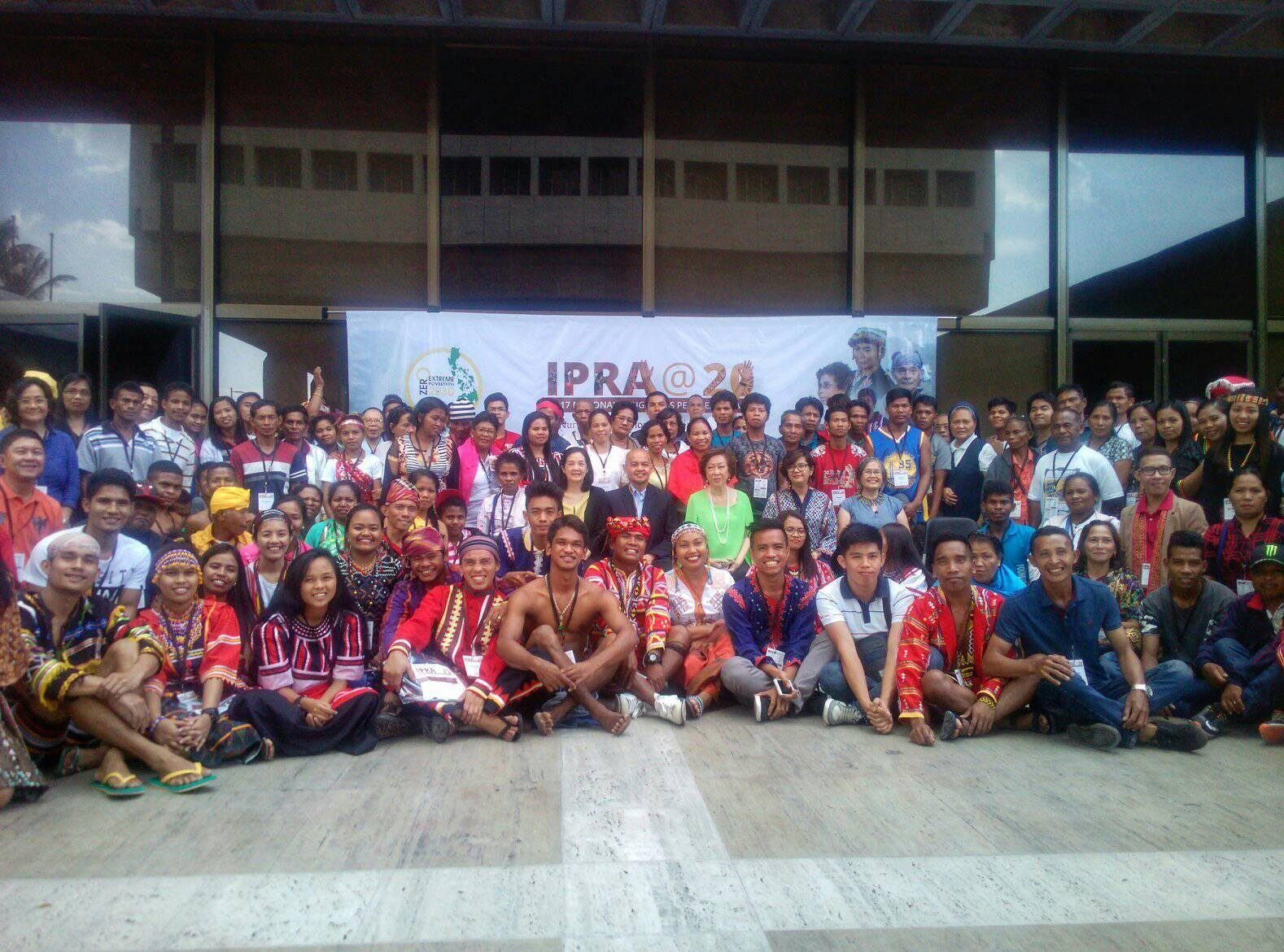SUMMARY
This is AI generated summarization, which may have errors. For context, always refer to the full article.

MANILA, Philippines – Since Republic Act 8371 or the Indigenous Peoples’ Rights Act (IPRA) was implemented two decades ago, it had opened greater opportunities for IPs and further empowered the community that used to label itself as marginalized.
This statement was made by May Hyacinth Ateng, a member of the B’laan tribe from Polomolok, South Cotabato, at the opening ceremony of the 2017 Indigenous Peoples Summit on Monday, October 16.
“Simula nang naging batas ang IPRA, napansin ko po na hindi na nadidiscriminate ang mga IP sapagkat dahil sa batas nabigyan ang mga katulad ko ng oportunidad lalo na livelihood,” the 23-yaar-old Ateng said. (READ: INFOGRAPHIC: Who are the Lumad?)
(Since IPRA was signed into law, I noticed that members of IPs have not been discriminated against anymore because the law itself gave people like me opportunities especially in livelihood.)
Ateng also said that the law enabled her to have access to free education without the need to leave her community.
Ateng is one of the beneficiaries of the Indigenous Peoples Leadership and Enterprise Development (IP LED) Academy that hopes to create pathways of learning that strengthen indigenous peoples’ leadership potentials and capacities.
It employs a dynamic learning process through meaningful skills development, articulation of values and vision, identification of current issues, challenges, and opportunities to create positive change and meaningful development in the IP communities.
Assisi Development Foundation sponsored IP LED Academy along with other non-profit organizations. According to its president, Ben Abadiano, the community provides the “soul of the Filipino culture.” This means that empowering IPs means investing in the future and preserving the diverse culture of the country.
The foundation currently has 516 IP children and youth in public and private schools supported through the Hope Reach Educational Assistance. It has built 23 school buildings around the country.
Convening IPs around the country
Ateng is one of more than 300 ethnic individuals from around the country who attended the 2017 Indigenous Peoples Summit at the Ramon Magsaysay Center in Manila.
Organized by the Assisi Development Foundation, the event focused on nurturing community initiatives aimed at advancing IP rights towards sustainable development. (READ: Lumad leaders to UN rapporteur: ‘We’re affected by wars which aren’t ours’)
“We are advocating an inclusive community where opportunities are open to all regardless of race and ethnic affiliation,” Abadiano, a Ramon Magsaysay Awardee, said in an interview with Rappler.
For Abadiano, the 20-year existence of IPRA raised national awareness, cultivating a culture of respect for IPs, and their customs and beliefs. He said the law slowly sealed the gap which used to exist among Filipinos divided by different cultures. (READ: Indigenous peoples march to ask Duterte to lift martial law in Mindanao)
Looking back
Speaking at the opening ceremonies of the 2017 Indigenous Peoples Summit, Supreme Court Associate Marvic Leonen said that the proposed IPRA went through rigorous debates and revisions before it was enacted into law in 1997.
Senate Bill 909 sought is to create an office under the Office of the President that will identify the borders of ancestral domain and will segregate it from the public domain. (READ: IN PHOTOS: Dayaw, PH’s indigenous peoples festival)
“Land is life, nobody owns the land. How can you say you own the land when the land actually owns you,” Leonen emphasized, quoting the words of a tribal chief.
Leonen, an expert on IP law, said that the 9-year fight to pass IPRA – the bill was first filed in the Senate in 1987 – was a collective effort of advocates who called for respect ofor ethnic tribes’ ancestral domain.
He ended his keynote speech with a challenge to all IPs to unite for everyone’s benefit. (READ: Indigenous peoples’ ‘humane, sustainable’ ways lead to peace – Magsaysay Awardee Abdon Nababan)
IPRA recognizes indigenous cultural communities or indigenous peoples (ICCs/IPs) as a diverse sector in the Philippines. It also gives them the ownership of their ancestral lands. – Rappler.com
Add a comment
How does this make you feel?
There are no comments yet. Add your comment to start the conversation.